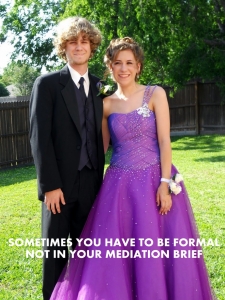Mediate to Comply with this Regulation

8 CCR §10414(d) requires that “All declarations of readiness to proceed shall state under penalty of perjury that the moving party has made a genuine, good faith effort to resolve the dispute before filing the declaration of readiness to proceed, and shall state with specificity the same on the declaration of readiness to proceed…. [emphasis added]”The way to show a genuine, good faith effort at resolution is to mediate the disputed issues. Here’s how you meet the regulation’s requirement to state with specificity:”The parties attempted to resolve the described dispute through mediation with mediator Teddy Snyder on [date].”
How often will you need this language? Almost never. The reason is that once parties mediate their dispute, more often than not they resolve it.
Convening
Convening, the process of getting everyone to agree to a time and place to mediate, can be the trickiest part. Some practitioners remain unfamiliar with mediation. They may confuse it with arbitration. We are all afraid to try new things, sometimes even when clients tell us to. You need to communicate your readiness to resolve the issues in a setting where those issues can be fully explored and the parties are in control of the outcome. Mediating is the win-win choice.











